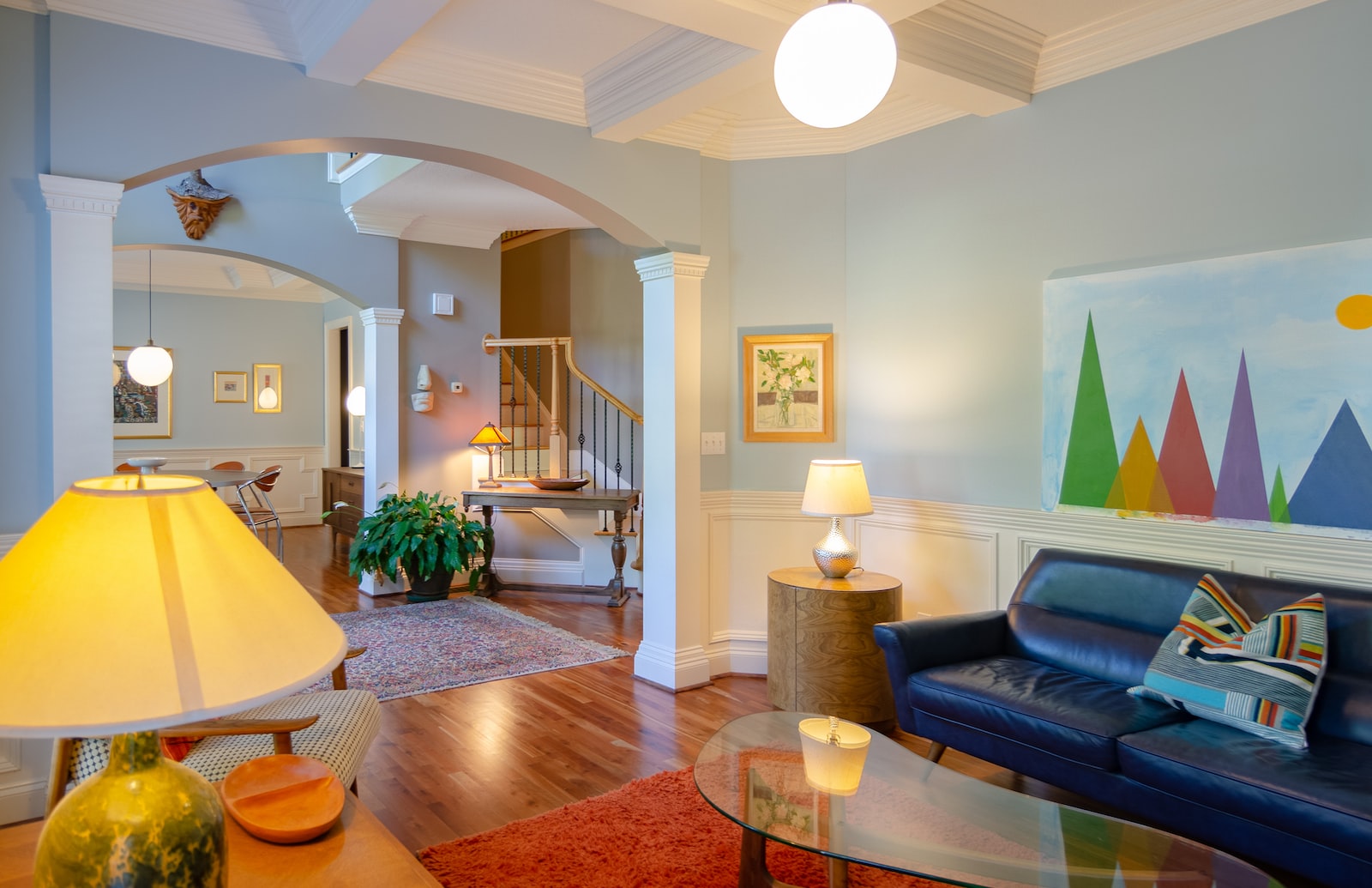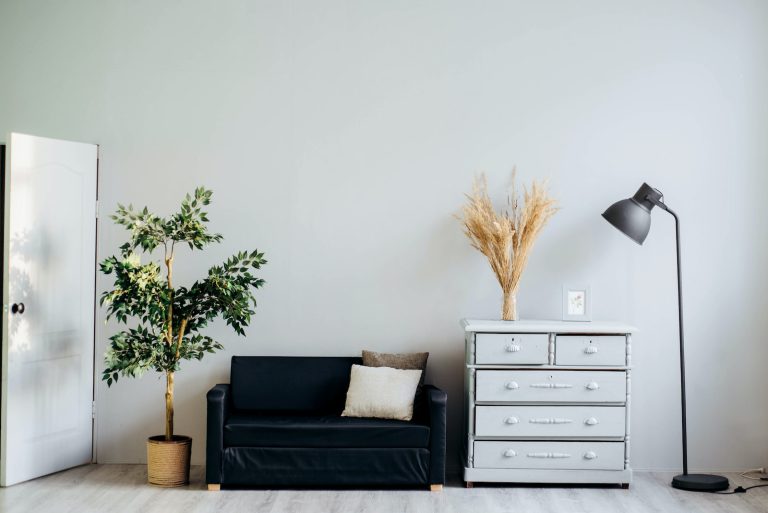How to Choose the Right Lighting for Your Home

Are you tired of inadequate lighting that makes your home feel dark and uninviting? Choosing the right lighting for your living space can make a world of difference in creating an ambiance that is both functional and aesthetically pleasing. But with so many options out there, it can be overwhelming to know where to start.
Fear not! We’ll guide you through the key factors to consider when choosing the perfect lighting for your home, whether it’s for your kitchen, bedroom or outdoor deck area. Let’s get started on illuminating your gorgeous abode!
Understanding Lightbulb Types
There are many different types of lightbulbs on the market, and it can be confusing to know which one to choose. Here is a guide to understanding the different types of lightbulbs so you can choose the right one for your home.
Incandescent Lightbulbs: Incandescent lightbulbs are the most common type of lightbulb. They use a filament that is heated by an electric current, which produces light. These bulbs are relatively inexpensive and have a long lifespan. However, they are not very energy-efficient, as most of the energy they use is converted into heat instead of light.
LED Lightbulbs: LED (light-emitting diode) bulbs are a newer technology that is rapidly gaining popularity. LEDs use less energy than incandescent bulbs and have a much longer lifespan. They also produce little heat, making them more energy efficient. However, LED bulbs can be more expensive than incandescent bulbs.
Fluorescent Lightbulbs: Fluorescent bulbs contain gas that emits UV light when excited by an electric current. This UV light then strikes a phosphor coating on the bulb, which emits visible light. Fluorescent bulbs are very energy-efficient and have a long lifespan. However, they can contain mercury, which is poisonous, so they must be disposed of properly when they reach the end of their lifespan .
Compact Fluorescent Lightbulbs: Compact fluorescent bulbs (CFLs) are a type of fluorescent bulb. They contain the same gas and produce light in the same way as traditional fluorescent bulbs, but they are significantly more energy-efficient. CFLs are more expensive than incandescent or LED bulbs, but they save money on electricity bills over time.
Halogen Lightbulbs: Halogen bulbs contain halogen gas and a filament that is heated by an electric current to produce light. Halogen bulbs produce brighter light than incandescent bulbs and have a longer lifespan, but they also use more energy and generate more heat.
Considerations for Different Spaces
The type of space you are looking to light will play a big role in the type of lighting you choose. For example, if you are looking to light a dark corner in your home, you may want to consider a floor lamp or table lamp. If you are trying to brighten up a large room, you may want to consider ceiling lights or track lighting. Here are some things to keep in mind when choosing the right lighting for your space:
- The size of the space: A small space will not need as much light as a large space.
- The purpose of the space: A space used for reading or relaxing may need different lighting than a space used for working or cooking.
- The amount of natural light in the space: A room with lots of windows will need different lighting than a room with few windows.
- The color scheme of the room: Certain colors can make a room feel more calming or vibrant.
Natural Lighting Solutions
There are many factors to consider when choosing the right lighting for your home. But one of the most important is the type of lighting you use. And one of the best types of lighting to use in your home is natural lighting.
Natural lighting comes from the sun and it’s completely free. It’s also the healthiest type of lighting for your eyes and your body. But it can be hard to get enough natural light in your home, especially if you live in a dark area or have a lot of trees around your house.
That’s why it’s important to find ways to get more natural light into your home. You can do this by adding windows, skylights, or solar tubes. You can also paint your walls a lighter color or hang mirrors up to reflect Light.
If you want the best possible lighting for your home, then you should consider using natural lighting solutions. They’re good for your health, they save you money, and they look great too!
Adding Ambient Lighting to Your Home
Whether you’re looking to add a touch of elegance to your home or simply want to create a more inviting atmosphere, ambient lighting can make all the difference. But with so many options on the market, it can be tricky to know where to start.
Here are a few tips for choosing the right ambient lighting for your home:
- Consider your needs. What type of atmosphere are you trying to create? Do you want something that’s relaxing and calming, or are you looking for something with a bit more energy?
- Think about the different sources of light in your space. Ambient lighting can come from a variety of sources, including overhead lights, lamps, candles, and even fireplaces.
- take into account the other elements in your room. The furniture, flooring, and wall color will all play a role in how your ambient light looks once it’s installed.
- Choose a style that complements your existing décor. There are countless styles of ambient lighting fixtures on the market, so it’s important to find one that fits with the overall look and feel of your home.
- Work with a professional if you’re unsure where to start. A lighting designer can help you select the right fixtures and placement for your needs and aesthetic goals.
Ways to Save Money on Lighting Upgrades
One of the best ways to save money on lighting upgrades is to purchase ENERGY STAR certified light fixtures. ENERGY STAR certified light fixtures are designed to use less energy and last longer than traditional light fixtures.
Another great way to save money on lighting upgrades is to take advantage of rebates and tax credits offered by your local utility company or the government. You can also save money on lighting upgrades by doing them yourself. There are many resources available online and in your local library that can help you complete simple lighting projects.
Advantages of Smart Lighting Technology
Smart lighting technology has many advantages over traditional lighting, including energy efficiency, increased safety, and improved aesthetics.
Energy Efficiency: Smart lighting is designed to be more efficient than traditional lighting, using less energy to produce the same amount of light. This can help to lower your energy bills and reduce your carbon footprint.
Increased Safety: Smart lighting can improve the safety of your home by providing better visibility in dark areas, such as stairways and walkways. Additionally, some smart lights can be set to turn on automatically when motion is detected, providing an extra layer of security.
Improved Aesthetics: Smart lighting can enhance the look of your home with its advanced controls and features. You can use smart lights to create different moods and ambiances, or even change the color of the light for a unique look.
Conclusion
Lighting plays an important part in creating the right atmosphere and ambience in your home. With our guide, you should now have a better understanding of how to select lighting solutions that will improve and enhance the look and feel of your space while also meeting all your illumination needs.
Make sure to assess your individual requirements, research different types and styles of lighting fixtures, consider both natural light sources, as well as artificial ones before making any decisions. Good luck with finding the perfect lights for your home!

Emma is a talented writer and enthusiastic gardener who shares her passion for plants and gardening on HomeGardenBlog.com. With years of experience in home gardening, Emma has become an expert in everything from planting and harvesting to pest control and soil management.






